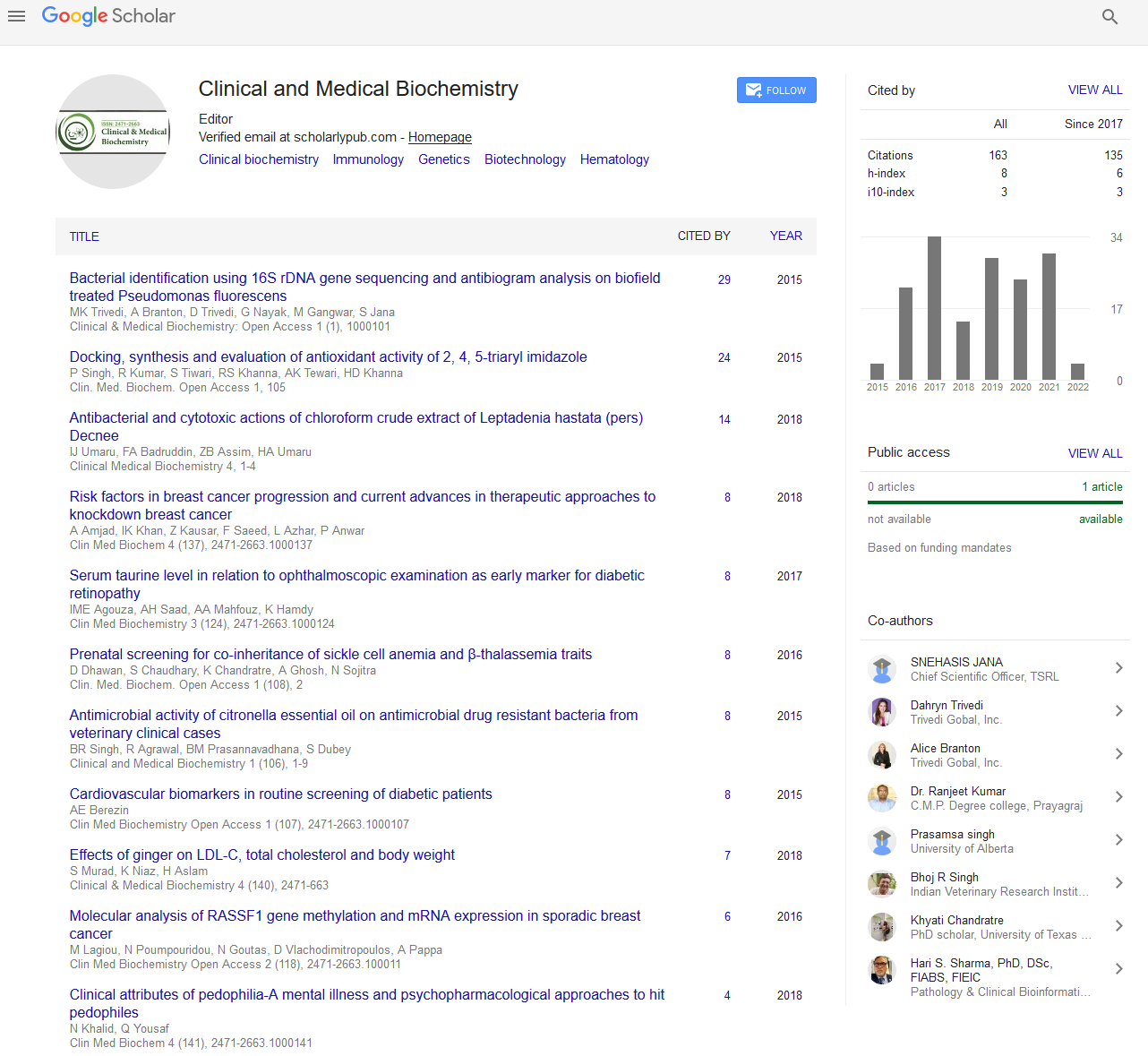Indexed In
- RefSeek
- Directory of Research Journal Indexing (DRJI)
- Hamdard University
- EBSCO A-Z
- OCLC- WorldCat
- Scholarsteer
- Publons
- Euro Pub
- Google Scholar
Useful Links
Share This Page
Journal Flyer

Open Access Journals
- Agri and Aquaculture
- Biochemistry
- Bioinformatics & Systems Biology
- Business & Management
- Chemistry
- Clinical Sciences
- Engineering
- Food & Nutrition
- General Science
- Genetics & Molecular Biology
- Immunology & Microbiology
- Medical Sciences
- Neuroscience & Psychology
- Nursing & Health Care
- Pharmaceutical Sciences
Abstract
Evaluation of High Density Lipoprotein Cholesterol as a Predict or of Diabetic Nephropathy in Type 1 Diabetic Patients
Francis Mugeni Wanyama, Christine Sekadde Kigondu, Mburu DN, Ngugi NN and Nathan Kiboi
Background: Diabetic nephropathy is a deadly micro vascular complication of diabetes characterized by albuminuria which manifests mainly 5 years from onset of type 1 diabetes. Currently, the gold standard for its prediction and diagnosis is the demonstration of micro albuminuria, but its predictive power has limitations. Objective: This study evaluated the higher density lipoprotein cholesterol (HDL-C) levels as a predictor of diabetic nephropathy among type 1 diabetic patients? to provide an alternative to urinary albumin-creatinine ratio (UACR) measurement. Subjects and methods: A descriptive cross-sectional study of 89 type 1 diabetic patients? from age 13-48 years, attending Kenyatta National Hospital?s diabetic clinic were enrolled. A questionnaire was administered to capture the subjects? demographic characteristics. Measured parameters included blood pressure, body mass index, urine albumincreatinine ratio, estimated glomerular filtration rate (eGFR), total and high density lipoprotein cholesterol. Results: Subjects who had albuminuria and low levels of high density lipoprotein-cholesterol had significantly higher diabetes duration and blood pressure (p0.05). A significant inverse correlation was found between high density lipoprotein cholesterol and urine albumin-creatinine ratio of the subjects (r=-0.394; p=0.001), while correlation between high density lipoprotein cholesterol and estimated glomerular filtration rate was not significant (r=0.029; p=0.098). Conclusion: High density lipoprotein cholesterol levels accords a significant predictive value of diabetic nephropathy onset due to its good correlation with urine albumin-creatinine ratio.


